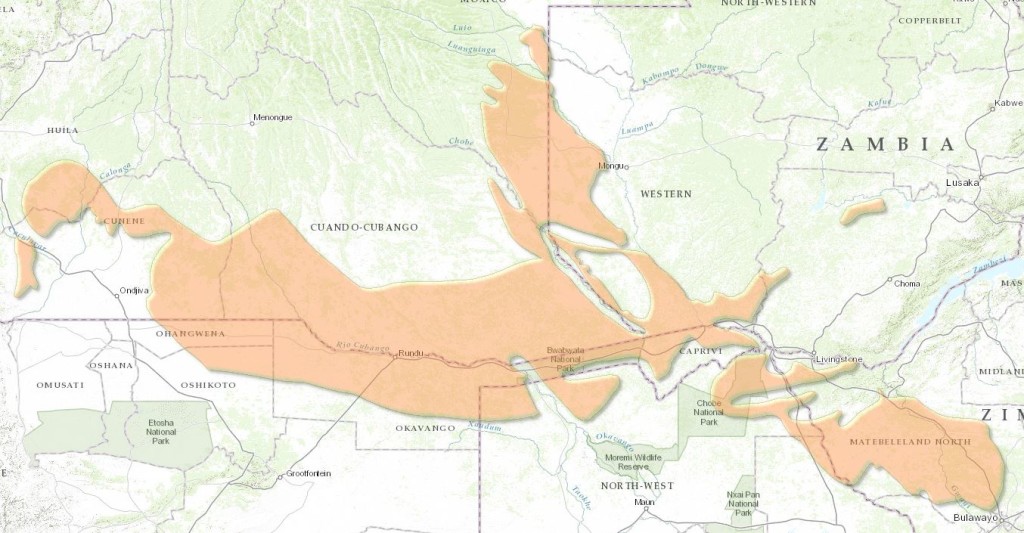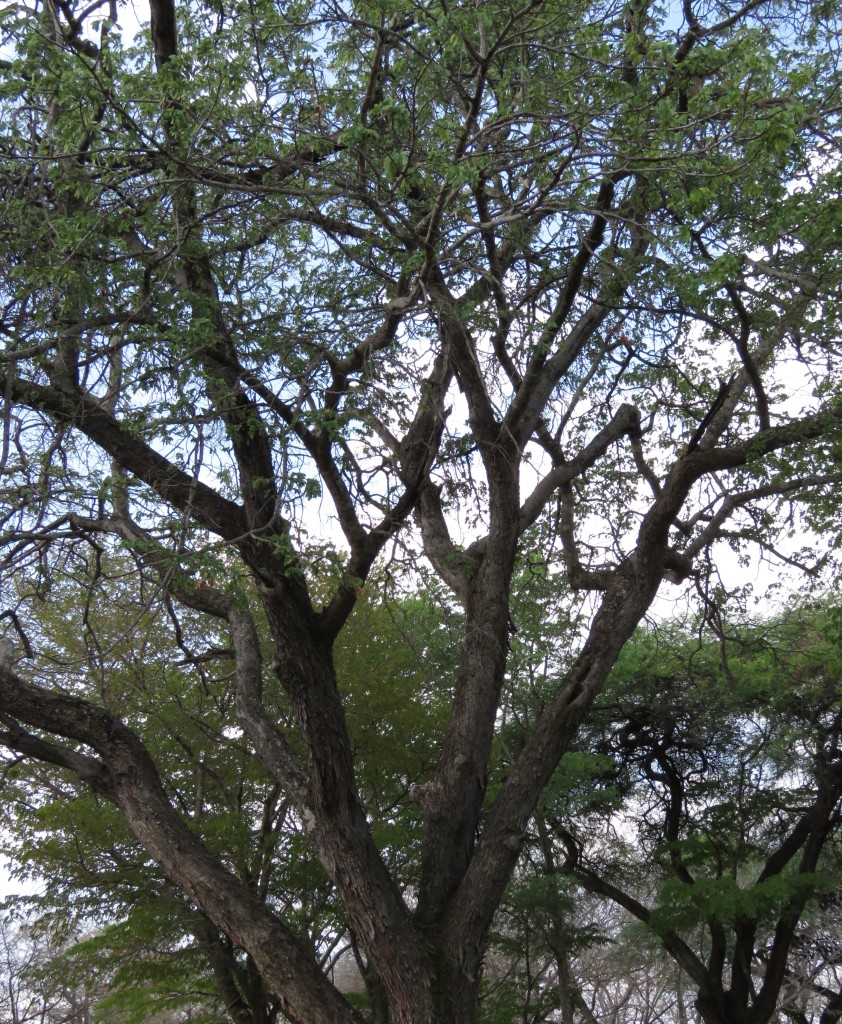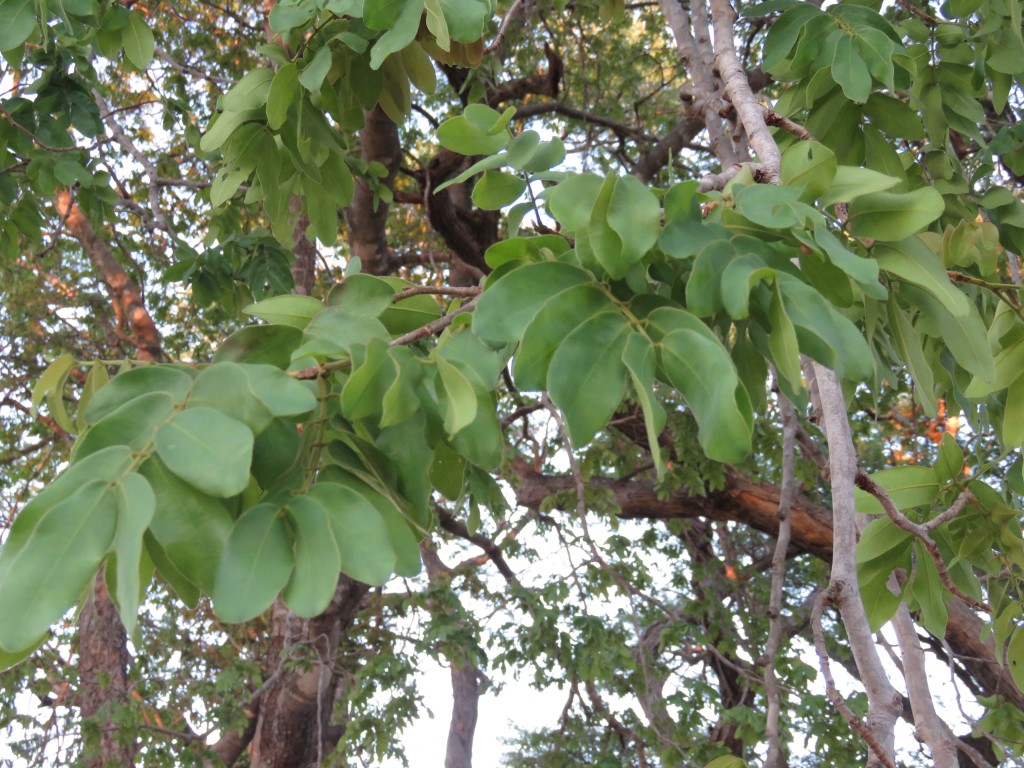Blogs posted from this ecoregion:
- Zambezian Baikiaea Woodlands: trophy hunting for the birds (October 2015)
The ecoregion extends from southeastern Angola and extreme northeastern Namibia through the southwestern corner of Zambia and into northern Botswana and the area of Hwange National Park in Zimbabwe.
Description of the Ecoregion
A detailed description of the ecoregion can be found at WWF’s site (the map above is a screen shot from that Wildfinder site). There is currently no page for this ecoregion on Wikipedia.
The ecoregion is characterized by WWF as “a mosaic of dry deciduous Baikiaea plurijuga-dominated forest, thicket and secondary grassland. […] This ecoregion forms a belt on deep Kalahari sands along the Angola-Namibia border, extending in a straight line to southwestern Zimbabwe. A portion of this ecoregion extends northwards, along the Zambia-Angola boundary. It is defined and shaped by a number of factors. The limits of the Kalahari sand delineate the east and west extent of this belt, while the southern boundary is limited by frost, and to the north, as rainfall increases the vegetation turns into evergreen Cryptosepalum forests and miombo woodland. Around the Barotse floodplain, seasonal waterlogging or flooding suppresses tree growth, and Baikiaea woodlands give way to grasslands. While the distribution of the forest, woodland, savanna and grassland elements is partly determined by edaphic and climatic factors, disturbance factors such as fire, logging, and agriculture play an increasing role in the spread of secondary savanna and grassland”.
My photos below are of Baikiaea plurijuga, also known as Zambezian Teak, taken in late September 2015 in Hwange National Park, Zimbabwe. At that time, they were conspicuously among the only green trees in a very parched and brown environment.
Birds of the Ecoregion
Faunistically, the fauna of the area has low levels of endemism as the habitats are intermediate between the southern savannas, the arid southwest and the miombo woodlands.The avifauna of the ecoregion is extensively described by WWF:
“With more than 400 recorded bird species, this ecoregion’s avifauna is characterized by moderately high species richness but low endemism. […] A variety of habitats exists in the ecoregion and directly adjacent to it, which boosts bird diversity. The many rivers, dambos and wetlands form an important network of aquatic habitats for resident and migrating birds (Barnes 1998).
Baikiaea woodlands are the preferred habitat of Bradfield’s hornbill (Tockus bradfieldi), which is near-endemic to the ecoregion and fairly common. Southern ground hornbill (Bucorvus leadbeateri) also occurs here. The ecoregion provides essential habitat for the rare and vulnerable black-cheeked lovebird (Agapornis nigrigenis), which is confined to medium-altitude mopane woodland in South Zambia and extreme northern Zimbabwe (Hilton-Taylor 2000). It occurs only where the mopane woodland is contiguous with Baikiaea dominated woodland. Birds spend the dry season in the mopane woodland (though not evergreen, Colophospermum mopane stays green far into the dry season) and feed on the young leaves of Pterocarpus antunesiana in the Baikiaea woodlands in the rains (Collar and Stuart 1985). It is extremely localized within available habitat. This species was massively exploited in the 1920s due to its popularity with the pet trade, and it seems that its populations have never fully recovered. Although it is officially protected, it is still subject to illegal trapping.
The ecoregion has a rich variety of raptor species including secretarybird (Sagittarius serpentarius), white-backed vulture (Gyps africanus), lappetfaced vulture (Torgos tracheliotus), whiteheaded vulture (Trigonoceps occipitalis), hooded vulture (Necrosyrtes monachus), lesser kestrel (Falco naumanni), Dickinson’s kestrel (F. dickinsoni), African hobby falcon (F. cuvierii), bateleur (Terathopius ecaudatus), tawny eagle (Aquila rapax), martial eagle (Polemaetus bellicosus), and African hawk eagle (Hieraaetus spilogaster). Riparian vegetation supports Pel’s fishing owl (Scotopelia peli) (Barnes 1998).
In the wetlands and riverine areas within the ecoregion, a great variety of water birds is found. Two rare and threatened species are noteworthy: wattled crane (Bugeranus carunculatus) and slaty egret (Egretta vinaceigula, VU) which have a wide distribution but are confined to floodplains and are sensitive to disturbance.
Resources for the Ecoregion Birder
Apart from field guides covering the birds of southern Africa, I’m not aware of any publications that focus particularly on the birds of this ecoregion.


